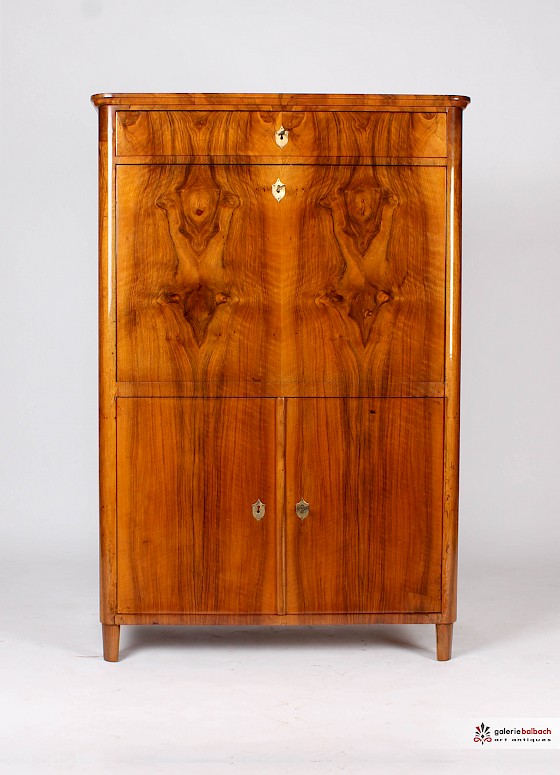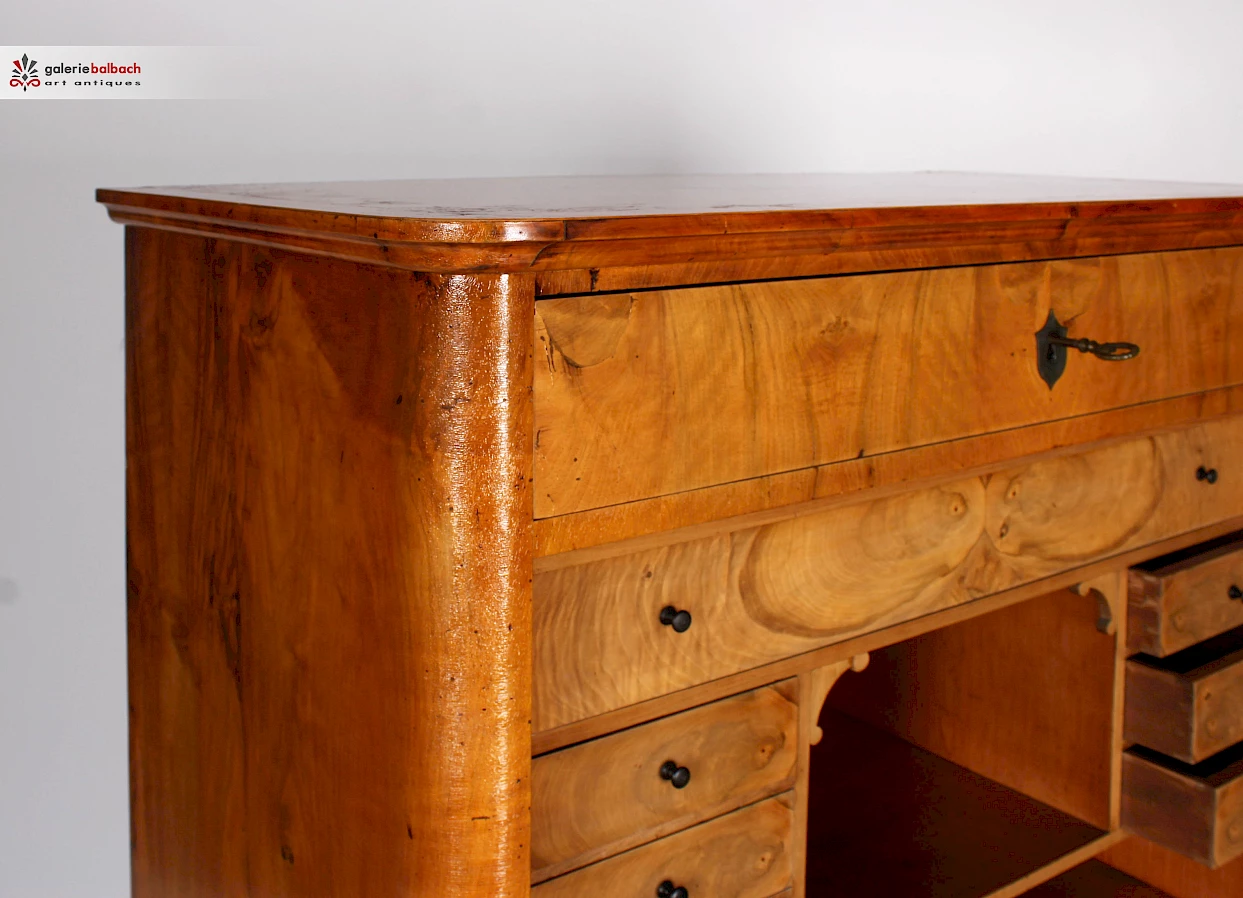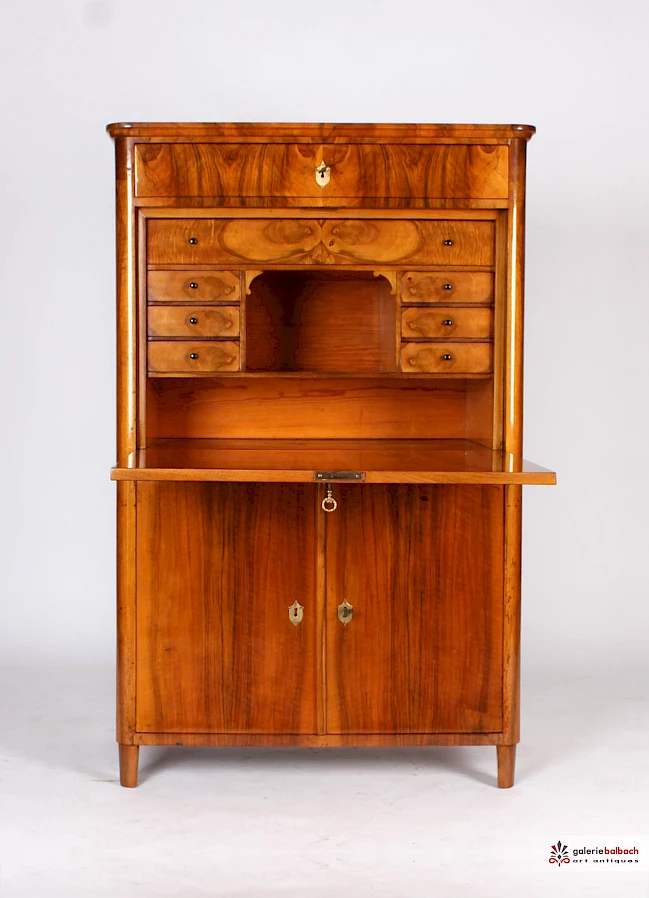Restoration and Shellac Polishing of a Biedermeier Secretary
 Walnut is a wood that tends to fade over the years.
Walnut is a wood that tends to fade over the years.
The wood, which is actually strong and has a strong grain, was very popular in all epochs of furniture making. When processed as a veneer, it was used on Biedermeier furniture such as secretaries, chests of drawers and cupboards.
The good original substance is worth a lot
The secretary presented in this example had a good original substance, but had once been unprofessionally refurbished in the early 1990s. The carpenter at the time had sealed the surface with a modern varnish. This varnish became milky and brittle over the years. In addition, the piece of furniture had been exposed to direct sunlight for a long time, which caused the walnut wood to fade and the colours to look like a uniform mass without contrasts.
 Once in the workshop, the secretary was first disassembled; that is, the flap, doors and interior were removed so that we could work with more manageable parts.
Once in the workshop, the secretary was first disassembled; that is, the flap, doors and interior were removed so that we could work with more manageable parts.
Removing the lacquer with paint stripper
There are two ways to remove the varnish:
-soak the varnish with nitro thinner and wash it off with white spirit.
-Coat with paint stripper and remove with a scraper.
We decided on the second option and, after the paint was off, cleaned everything with alcohol and finest steel wool.
Now we could close the deeper scratches and wormholes with wax putty. Then the entire wooden surface was lightly sanded and smoothed. At the same time, necessary woodwork was carried out. The runners of the drawers were renewed, holes in the back wall were closed.
The shellac polish
Now the shellac could be used.
Shellac is available in various shades from lemon to ruby. For the walnut wood of this secretary, a medium shade was suitable.
Shellac polishing is done as follows:
A cloth ball is soaked with the shellac dissolved in alcohol. The ball is then used to apply the shellac to the wood in circular movements. The circular movements ensure a homogeneous surface with a constant thickness of the layers. This is done in several working steps with respective drying times. This is why one also speaks of "several layers of shellac". The art consists in slightly dissolving the previous layer with each new one and thus connecting the layers.
Only through the shellac does it become clear what an excellent choice of wood the maker of the piece of furniture has made. The mirrored finish of the wood creates a beautiful picture not only on the outside but also on the inside of the secretary.
We are also happy to restore your antique pieces of furniture. We can adapt the colour and gloss level of the shellac to your individual wishes.
Just give us a call or send us an email!
We would also be happy to restore your antique piece of furniture!
Simply contact us via e-mail, SMS or WhatsApp. If you send us some photos of the object to be restored, we can usually give you the approximate restoration costs based on the pictures.
Also interesting

Restoration and brightening of an oak cupboard
Can you actually make dark furniture light again?

Restoring a rocking chair
The future of this cosy armchair was pretty much on the line. We decided to keep rocking!

Restoration of an antique grandfather clock
What good is the most beautiful clock if it doesn't run properly?







